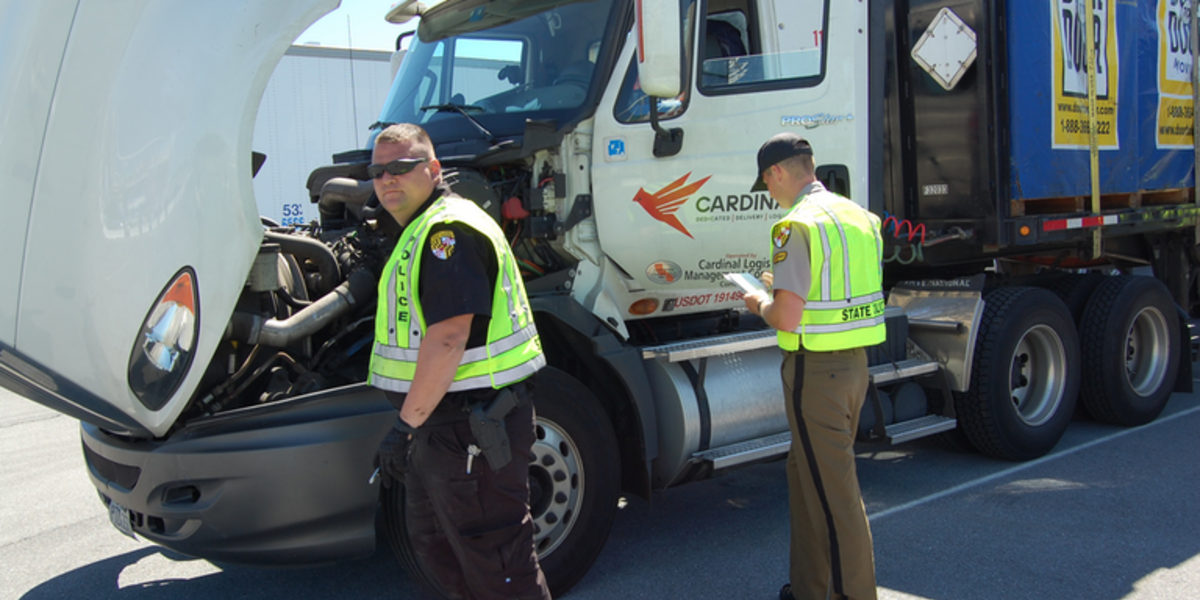This year’s focus is on Hours-of-Service compliance and Lighting.
“In fiscal year 2020, inoperable lamps were the No. 1 vehicle violation, accounting for about 12% of all vehicle violations discovered that year, according to the Federal Motor Carrier Safety Administration.
During last year’s Roadcheck, the top driver out-of-service violation category was hours of service, accounting for nearly 35% of all driver out-of-service conditions, CVSA officials said in press release." Reference: https://www.truckinginfo.com/10135898/roadcheck-2021-to-target-hours-of-service-lighting
Inspectors will primarily be conducting the North American Standard Level I Inspection, which is the most thorough roadside inspection of both the driver and the truck.
International Roadcheck is the largest targeted enforcement program on commercial motor vehicles in the world, with nearly 17 trucks or buses inspected, on average, every minute in Canada, the United States and Mexico during a 72-hour period. Since its inception, more than 1.5 million roadside inspections have been conducted during International Roadcheck campaigns.
International Roadcheck is a CVSA program with participation by the U.S. Federal Motor Carrier Safety Administration, Canadian Council of Motor Transport Administrators, Transport Canada, and the Secretariat of Communications and Transportation (Mexico).
Learn more about International Roadcheck.
Click here for a printable Roadcheck checklist for your drivers.
Tips to help avoid light and HOS violations during Roadcheck:
This year’s International Roadcheck inspection event will take place May 4-6 on a highway near you. If you have drivers on the road during the three-day event, make sure they are prepared for a comprehensive roadside inspection.
Inoperable lights are obvious
Ironically, an inoperable light is one of the most visible defects a vehicle can have. That is why it tops the annual list of common roadside violations, because inspectors can spot a broken lamp a mile away.
To avoid light violations, consider these tips:
1. Drivers must check all required lights during their daily pre- and post-trip inspections — it is required under §392.7 and §396.11.
2. Refer to §393.11 for a list of all DOT-required lights, and make sure drivers know what is required depending on their vehicle type.
3. All lights on the unit must work! Even lights that are not required by the FMCSA. Lights not working will generate a violation and depending on the light could cause an OOS violation.
4. Drivers must make sure their lights are not only working, but clean. A dirty light may not meet the candlepower standards and could result in a violation. Make sure drivers have cleaning supplies in the vehicle.
5. Drivers must also ensure all required reflective tape and reflectors are in place and clean. (Conspicuity) If tape or a reflector was required at the time of manufacture, it must be maintained — you can find the manufacturing standards in 49 CFR §571.108.
6. Drivers must carry spare fuses for any light circuit that relies on a fuse. This is required under §393.95. Though not required, drivers may also want to carry spare bulbs.
HOS:
- Out-of-Service Orders can be issued if you are in violation. If you are required to operate with an ELD, and if caught driving without one, you will be immediately placed out of service for 10 hours. Fines and violations will also be issued. If placed out of service, an ELD must be installed/operable before next trip.
- The ELD must be compliant.
- The drivers must have the following documentation on hand:
- The ELD user manual
- Step-by-step instructions on how to transfer data to enforcement officials.
- A step-by-step guide on managing ELD malfunctions, as well as how to manually record hours of service data.
- Blank Logbook with a minimum of eight days
- You can temporarily operate with a broken device. All drivers are required to carry blank logs so they can continue logging their hours on paper in the event of a device malfunction. These paper logs can be used for eight days.
What if there is a violation?
If a driver is cited for an inoperable light, HOS violation or any other equipment violation but not placed OOS, the vehicle can be driven. However, the defect must be recorded on that day’s post-trip inspection report and repaired before the next dispatch.
If a driver is placed OOS for a violation, he or she cannot drive until the violation is repaired.
Leading up to and during the Roadcheck 2021:
- Complete your pre and post trip inspections DAILY
- Address repairs immediately
- DO NOT operate a Commercial Vehicle if your ELD device indicates you are in violation (in the red). This is by law!
- Keep your logs up to date for the day and the 7-days prior
- DO NOT ever skip a DOT Station while in your commercial vehicle. Anyone operating a vehicle GVWR 10,001 lbs. or more is in a commercial vehicle.
- If you are subject to the Level 1 Inspection, DO NOT simply hand over your ELD tablet and expect the officer to navigate the ELD system. Follow the officer’s direction. You will be in violation if you do not appear trained in the use of your ELD.
- CLEAN YOUR TRUCK EXTERIOR AND INTERIOR! Dirty/cluttered trucks indicate to a DOT Officer that you do not take safety seriously. No trash, no leaks or oil, no unsecured items!
COVID-19 Considerations During Roadside Inspections
Roadcheck inspectors plan to use precautions to prevent the spread of COVID-19, and your drivers should too.
- Make sure they are equipped with masks (more than one), disposable gloves, disinfectant, and hand sanitizer. A spare pen is also a good idea, so they do not have to borrow one.
- Remind drivers to keep their distance from inspectors. They should stay in the cab when possible. If standing outside talking to someone, they should try to stand in a crosswind so airborne particles are not blowing at them.
- Avoid touching shared documents and other objects as much as possible.
Click it or Ticket! National Seat Belt Enforcement Mobilization: May 17 - June 6
Seat belts have been proven to be one of the best ways to save your life in a crash. Yet many still do not buckle up. Worse still, not wearing a seat belt is a habit that will pass on to impressionable youth who, in turn, will think it is safe to not buckle up.
The Click It or Ticket campaign focuses on safety education, strong laws, and law enforcement support to save lives.
Seat Belts Save Lives








